Art Fairs
See Highlights From the 2017 Winter Antiques Show
New exhibitors and initiatives invigorate the richly varied 63rd edition.
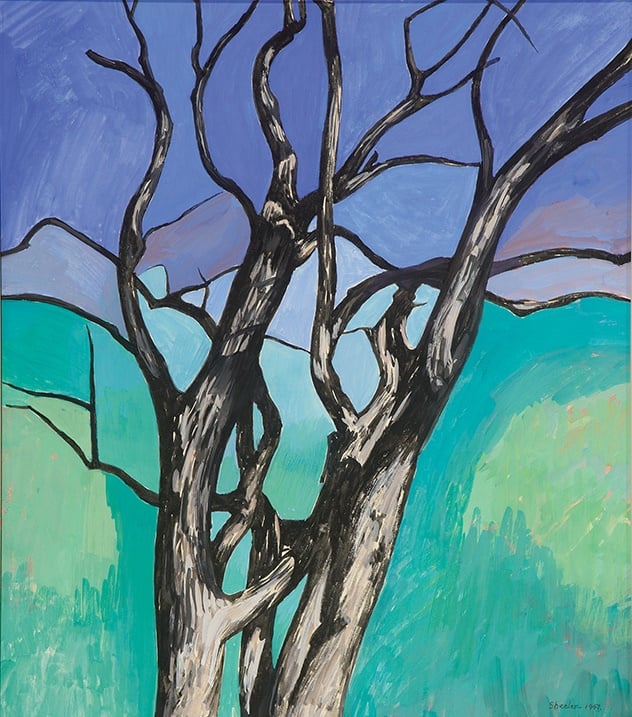
New exhibitors and initiatives invigorate the richly varied 63rd edition.

Eileen Kinsella

As fair organizers and exhibitors were putting the final touches on their booths at the Park Avenue Armory late this morning, artnet News was among the lucky group allowed in at noon for a sneak peek at the offerings from some 70 U.S. and European dealers at the 63rd edition of the Winter Antiques Show (through January 29).
The wide-ranging and eclectic selection of work on offer ranges from ancient art to Old Masters and antique maps, folk art, outsider art, Neoclassical furniture, and modern and contemporary paintings and sculpture; it even includes contemporary wallpaper. A committee of 160 experts from the US and Europe vets every object displayed at the show.
The lavish opening party that the show has become famous for takes place tonight (January 19) with all proceeds and ticket sales from its nine-day run going to East Side Settlement in the South Bronx.
“We’ve raised the bar again,” said executive director Catherine Sweeney Singer, who was flanked by co-chairs Arie Kopelman and Lucinda Ballard, as she spoke to a group of reporters and students from the East Side Settlement programs today.
In addition to six new exhibitors and genres that have not been on view for several years, including Oceanic and Tribal art, Sweeney Singer said “we’ve expanded the show into not just the 21st century but into 2017. Last year we started in that direction. Now this year you’ll see the work of what are called emerging artists, because some of our exhibitors have expanded into that area.”
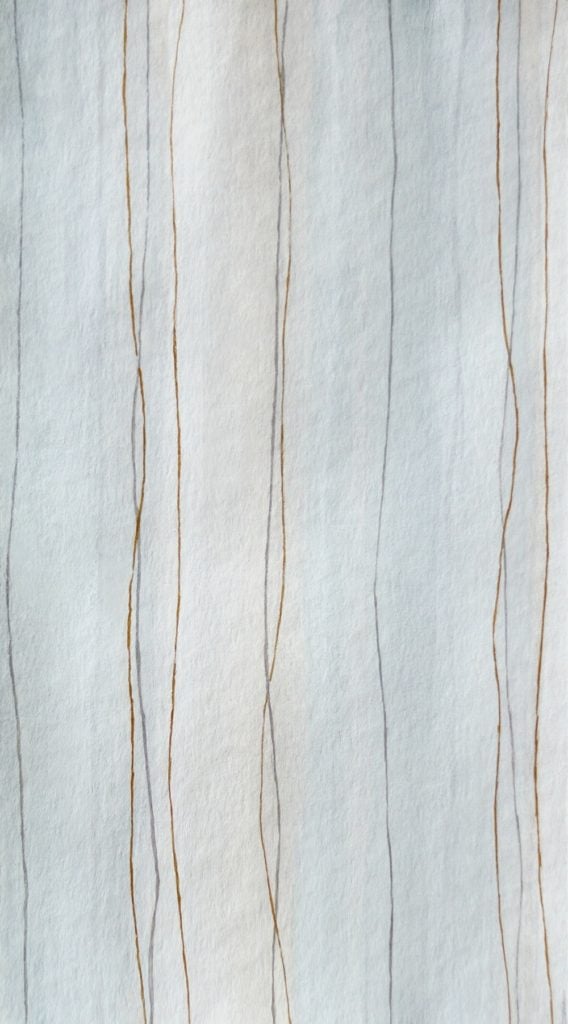
Mattia Bonetti, Carolle Line (2017). Courtesy David Gill Gallery and Carolle Thibaut-Pomerantz
This year also marked the first time that dealers were able to collaborate and share booths. Among these were antique wallpaper specialist Carolle Thibaut-Pomerantz, whose selection was complemented by London dealer David Gill’s presentation of Mattia Bonetti’s works. The artist has created a special wallpaper entitled Carolle Line that is presented on the overall walls of the booth, and vintage panels will be hung over it as small or large pictures. On the floor are examples of Bonetti’s innovative furniture.
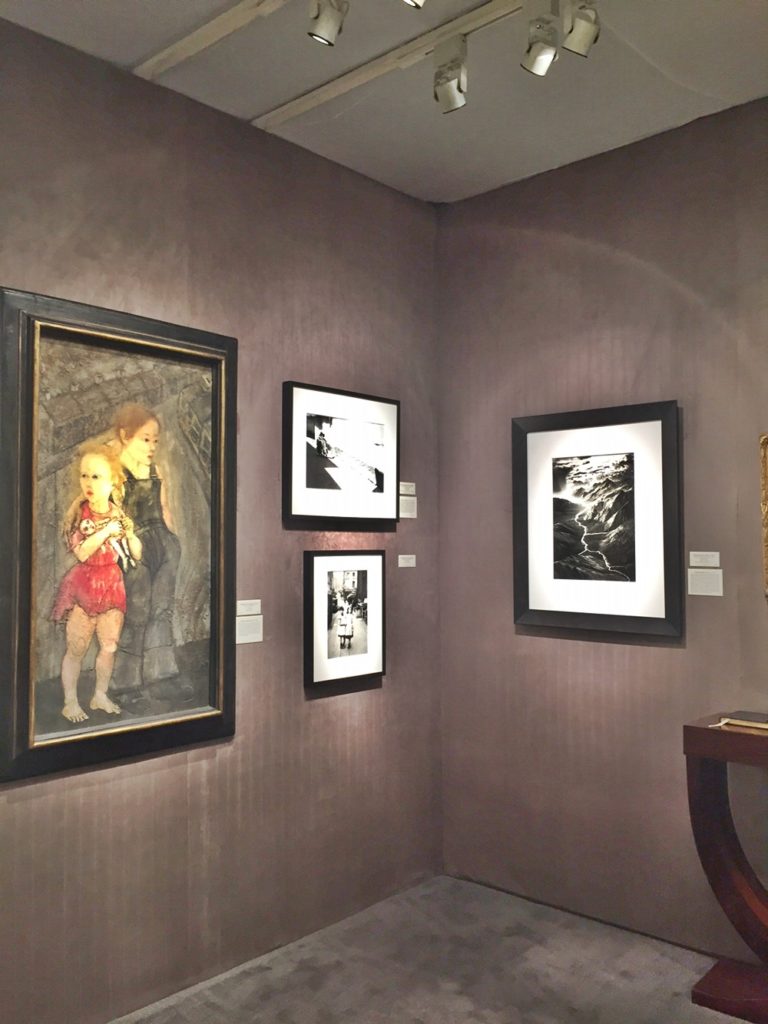
Installation view of Jonathan Boos and Peter Fetterman collaborative booth at 2017 Winter Antiques Show. Photo by Eileen Kinsella.
Another collaboration was that of Los Angeles photographs dealer Peter Fetterman and New York dealer Jonathan Boos, who, in addition to each having a solo booth, also had one that juxtaposed 20th century American art with vintage photographs by artists like Sebastião Salgado and Ansel Adams. After eight years of having booths near each other at the Winter Antiques Show show, the two dealers collaborated on a show called Juxtaposed, “to highlight similarities between the pieces,” said Michael Hulett, assistant director of Peter Fetterman. “This is like Juxtaposition 2.0” said Hulett. The official title of the booth is “Juxtaposed: Paintings, Sculpture & Photographs.”
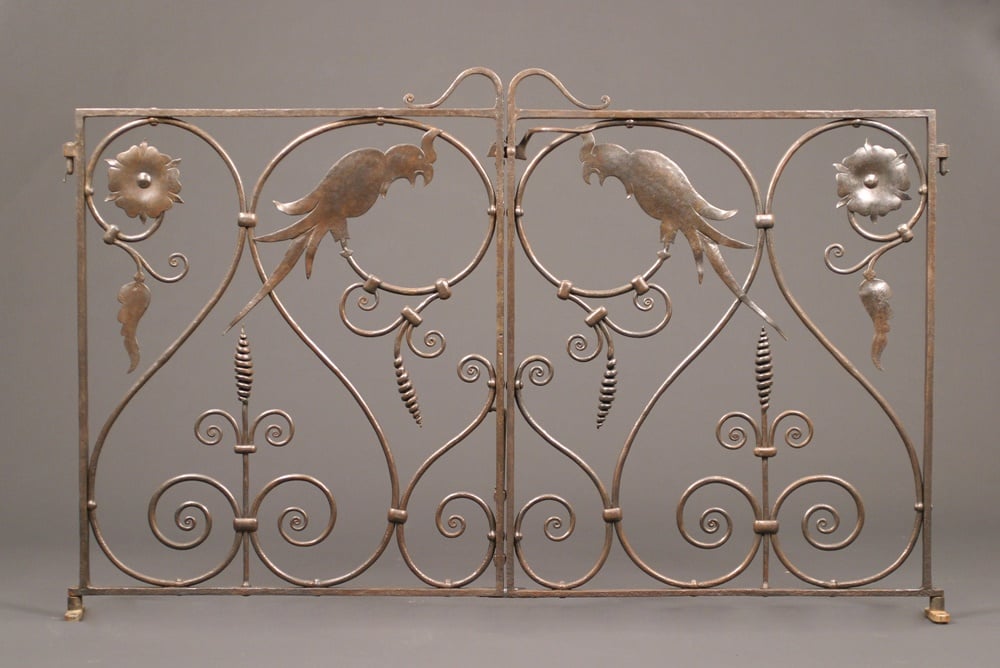
A metalwork by Samuel Yellin. Courtesy Bernard Goldberg Fine Art.
First-time exhibitor and New York dealer Bernard Goldberg devoted his booth to the work of metal artist Samuel Yellin. Goldberg told artnet News in an email: “After almost 20 years of collecting lifetime works of Samuel Yellin, we decided to mount an exhibition of his most iconic pieces. Winter Antiques was the only venue that made sense. They exhibit only the best in a meticulously vetted show, which gives great credibility to what is offered.”
Yellin’s signature works were commissioned by prestigious clients, including J.P. Morgan, Andrew W. Mellon and Cornelius Vanderbilt Whitney, as well as institutions such as Harvard, Yale, The Cloisters, the Federal Reserve Bank of New York, and the Washington National Cathedral.
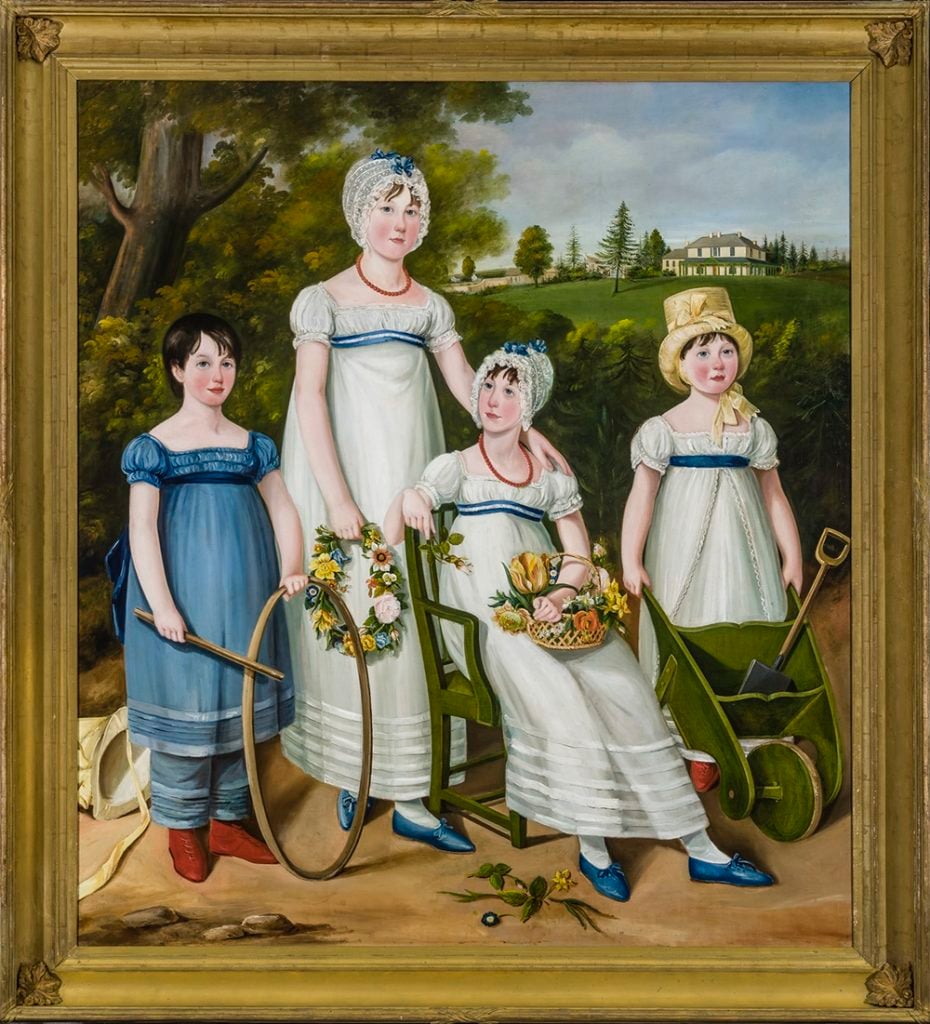
A portrait of four children in a country landscape (circa 1810) attributed to “English Naive School” at Hirschl and Adler. Courtesy Hirschl and Adler.
Longtime exhibitor Hirschl & Adler continued its tradition of setting up its booth as though it were a domestic scene. This “allows us to highlight the range of media we show—furniture, porcelain, glass, lighting, paintings, sculpture,” said Liz Field, the gallery’s managing director. “Clients love to be shown how to make things work together. It is like a peek into someone’s home.”
This year the gallery is doing a version of a Boston Neo-Classical dining room, including a two-section Cumberland Action Boston-made table, a set of 12 Boston dining chairs with elaborate crest rails and a dramatic sabre-sweep of the legs, a monumental carved wooden New York mantel (from a Brooklyn house circa 1812), and some fantastic period lighting, as well as American paintings.
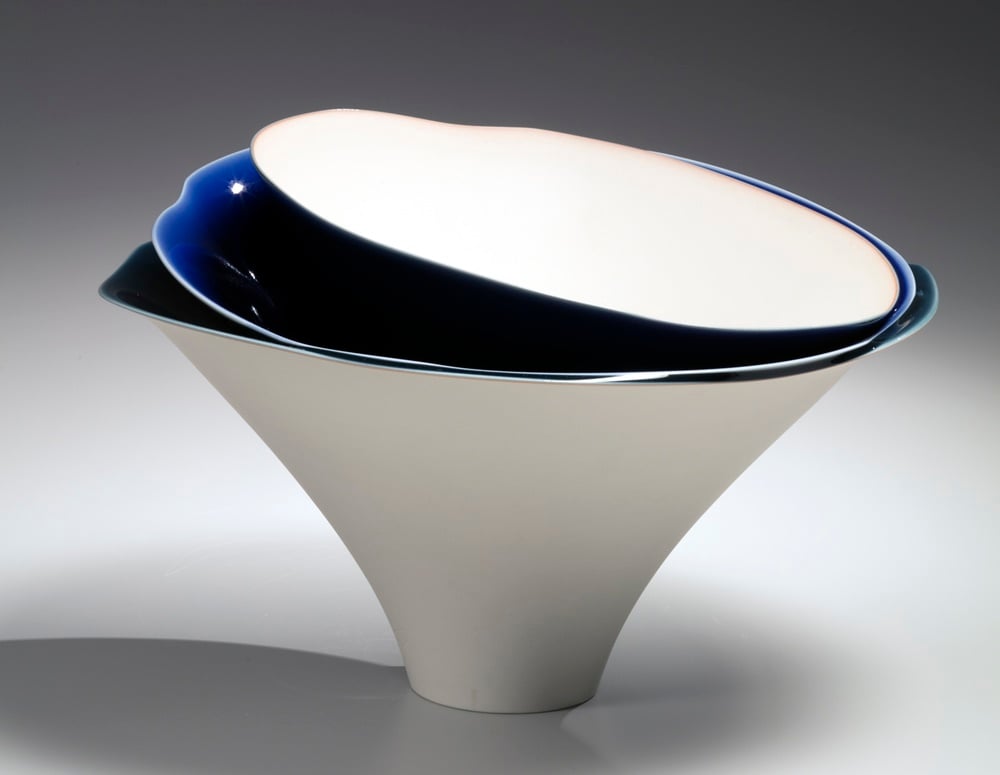
Fukumoto Fuku, Moonshadow (circa 2016). Courtesy Joan B. Mirviss Ltd.
Another curated booth belongs to veteran exhibitor Joan B. Mirviss Ltd., where “Ao: Colors of Nature in Blue + Green” will include a selection of antique and contemporary Japanese art unified by the “ao”—a combination of earth and sky. This year marks Mirviss’ 36th year exhibiting at the show.
Another standout booth from a first time exhibitor was that of San Francisco gallery Lebreton, which focuses on artist who were either from, or who worked in, the South of France and the French Riviera in the mid-20th century. Works on view included sculpture, furniture, drawings, and other works by artists such as Claude and François-Xavier Lalanne, Bernar Venet, Pablo Picasso, Manolo Valdes, and more.
A gallery spokesman told artnet News that showing in New York made sense because of the number of clients it works with here.
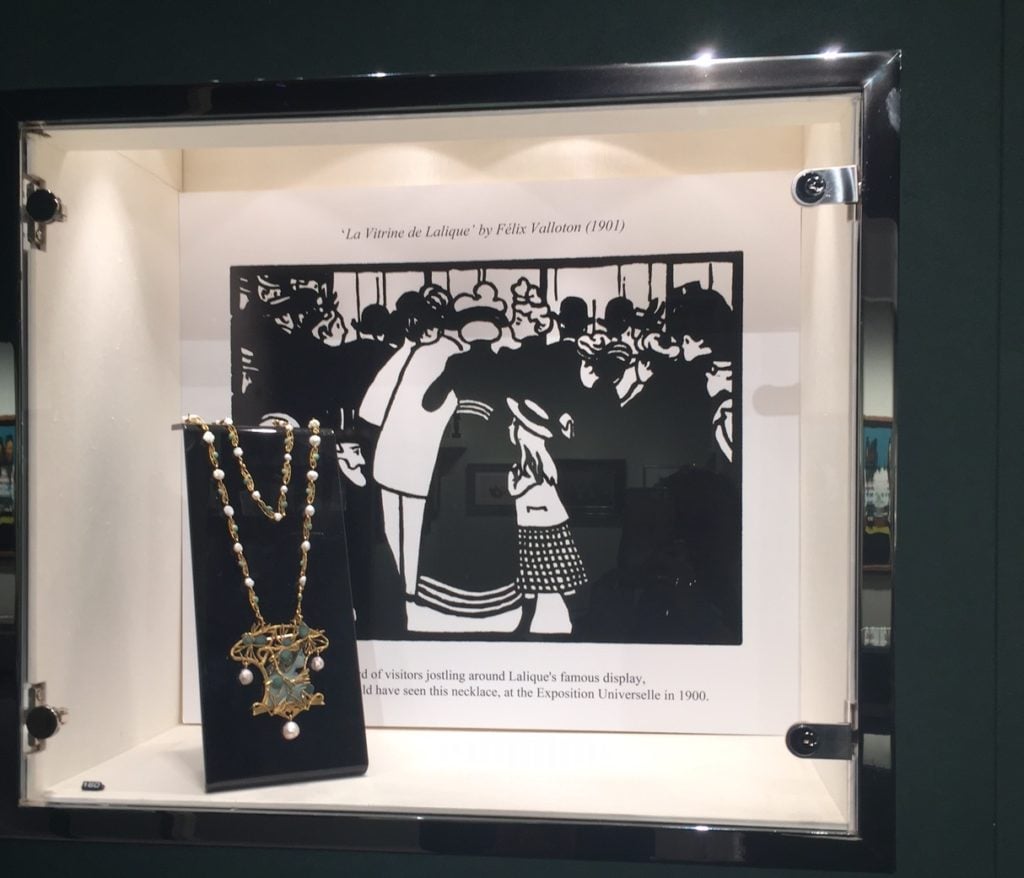
Rene Lalique’s lavish necklace with a portrait of his muse, at Wartski Gallery, London. Photo by Eileen Kinsella.
London-based jeweler Wartski had a vast selection of vintage jewelry on offer. Associate managing director Katherine Purcell gave us the back story on a highlight, a lavish and extremely detailed necklace from 1900 that Rene Lalique created for his muse (and later second wife), Augustine-Alice Ledru, that includes pearls and glass pinecones surrounding her carved portrait and which symbolizes eternal love. The necklace was displayed in front of a drawing by Felix Valloton showing the stir that the pendant created when it was first exhibited at the Exposition Universelle in Paris in 1900.